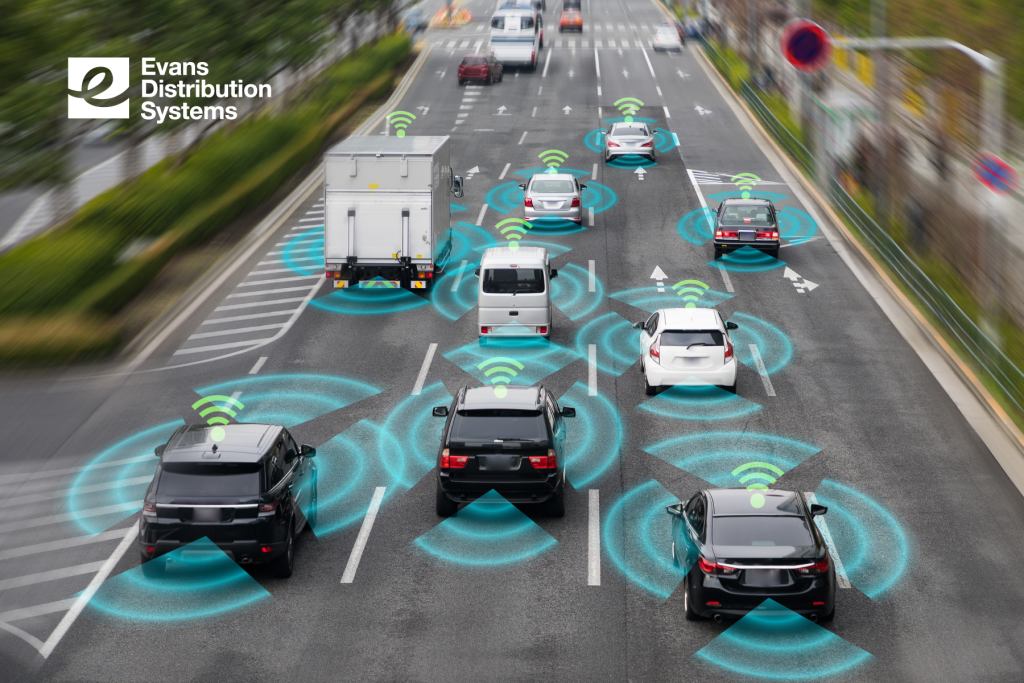
There is new technology crashing into our roads and it’s only getting more and more advanced. Vehicle-to-Everything (V2X) is a mobile communication system that connects drivers with their immediate surroundings. As technology matures, so do the safety benefits and the funding for infrastructure improvements to support this new form of communication.
V2X began as a byproduct of several industries. As wireless technology took off in the 1990s, a system known as Dedicated Short-Range Communications allowed vehicles to share safety information. Years later, the U.S. Department of Transportation and National Highway Traffic Safety Administration began leading the charge in piloting the technology in urban areas.
As a wireless communications tool, it wasn’t long before V2X became part of the telecommunications industry agenda, motivating telecom corporations to enhance wireless technology on a larger scale. The 5G infrastructure is exceptionally important to the development and use of V2X technology today.
Additionally, with the advent of autonomous vehicles breaking into the consumer market, automotive manufacturers also played a key role in V2X technology by enhancing vehicles with sensors, cameras, and wireless network connectors to navigate risks on the road.
There are several different forms that V2X encompasses:
- Vehicle-to-Vehicle (V2V): Communication signal between two vehicles.
- Vehicle-to-Infrastructure (V2I): Communications between vehicles and infrastructure, like a stop light.
- Vehicle-to-Pedestrian (V2P): Communication between vehicles and pedestrians via phones/IoT.
- Vehicle-to-Network (V2N): Communications between vehicles and cellular networks, such as a navigation system.
- Vehicle-to-Device: (V2D): Communication between a vehicle and any other smart device such as an app.
Benefits
So, how does this technology benefit us? The short answer is safety. By having multiple forms of communication, drivers become more aware and more likely to avoid risk.
For example, drivers may be alerted that a street closing, or a car accident is within reach. V2X will reroute the driver to a clear path. It also manages traffic flow, traffic lights, weather conditions, public transportation, and more. All of these scenarios create a safer and more manageable driving environment.
It also paves the way for autonomous vehicles sharing the roads with drivers. Most autonomous vehicles rely on sensors to identify various objects. But technology has yet to prove that the sensors work every time. In a fully equipped V2X city, the technology is far more reliable. In a hyper connected world, where communication flows freely, autonomous drivers and real drivers can co-exist.
Truck Safety
When it comes to truck safety, V2X is a game changer. The size and weight of trucks hinders their ability to react quickly. Blind spots, extended brake time, hazardous weather and road conditions are common sources of collisions. A communication tool that improves driver awareness can lead to increased safety.
V2X helps drivers by:
- Improved Traffic Flow
- Route Optimization
- Fuel Efficiency
- Reduced Stress
- Fleet Management
- Reduced Accident Rate
- Identification of Rest Stops
- Avoidance of Poor Weather/Road Conditions
Autonomous trucks have been a key subject in the transportation industry over the last few years. While manufacturers are still perfecting the technology, much of that relies on V2X infrastructure to become a reality.
The Roadmap Ahead
In August of 2024, the Department of Transportation (DOT) released the “Saving Lives with Connectivity: A Plan to Accelerate V2X Deployment,” with a goal of reducing deaths and serious injuries on the road.
According to the plan, the vision is to “enable a safe, efficient, equitable, and sustainable transportation system through the national, widespread deployment of secure, interoperable V2X technologies.”
It takes into consideration all of the key stakeholders that are needed to execute this vision by providing support regarding investment, research, and deployment of V2X technologies. The V2X community includes ferderal agencies, the automotive industry, and support from the private sector.
There is also emphasis on security and privacy. All wireless communication is at risk of cyber-attacks, and it is essential that the communication provided is confidential and trustworthy.
The plan examines the need to have interoperability in allowing communication to flow on a wide range of devices including mobile and in-vehicle. This requires a great deal of cooperation between those key stakeholders as well.
According to Transport Topics, the Federal Highway Administration granted $60 million to develop V2X in Arizona, Texas and Utah this year.
Conclusion
All in all, there is a long way to go. The plan has a three-phased approach leading up to full deployment by 2036. Assuming that all stakeholders are committed to the time and investment of V2X, the benefits are predicted to be substantial.
